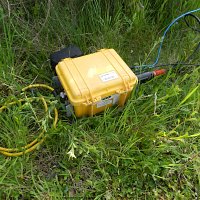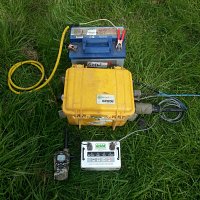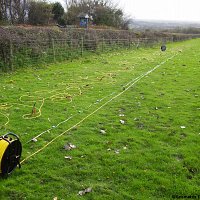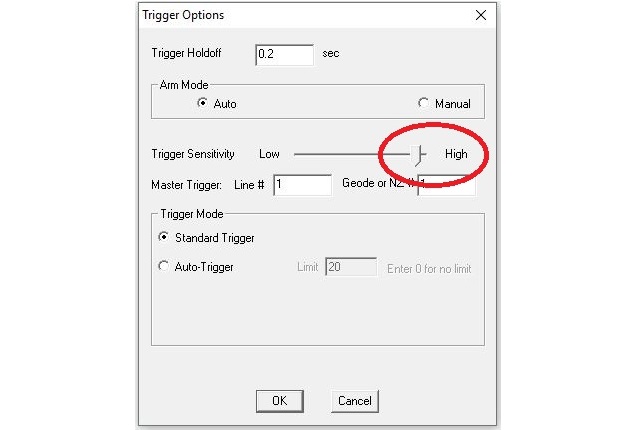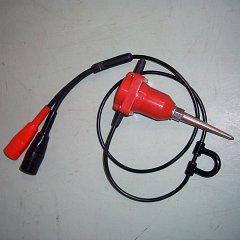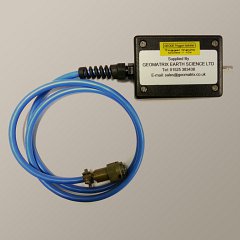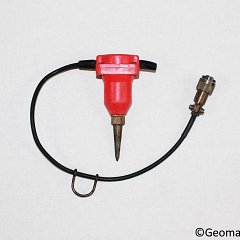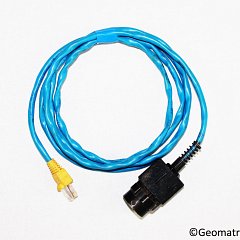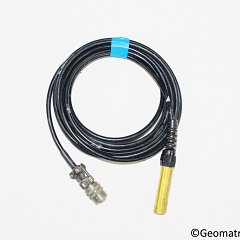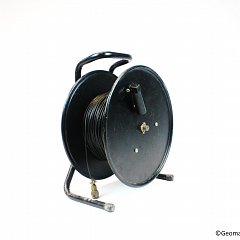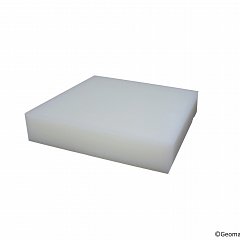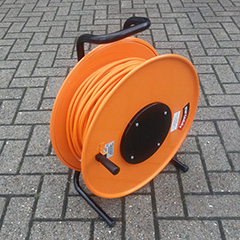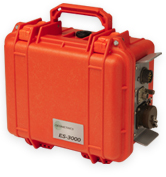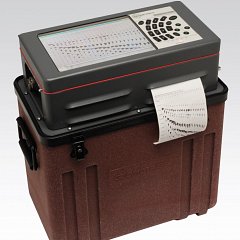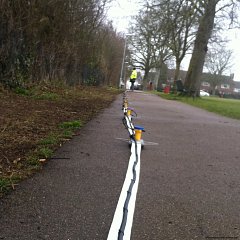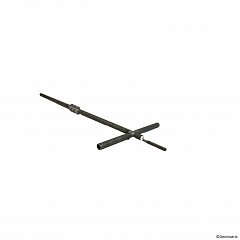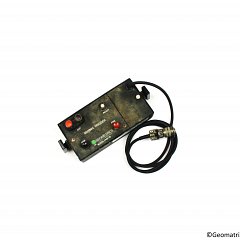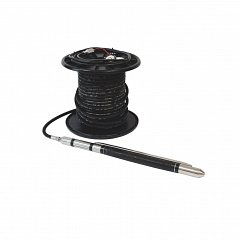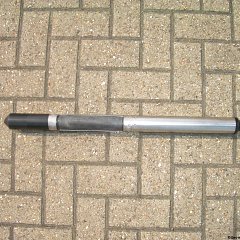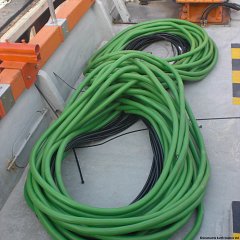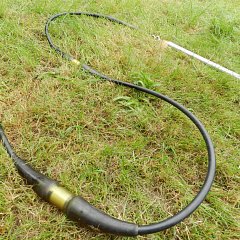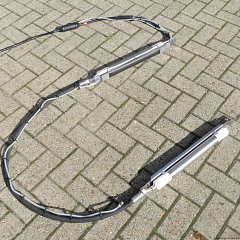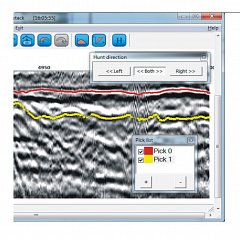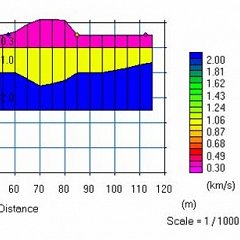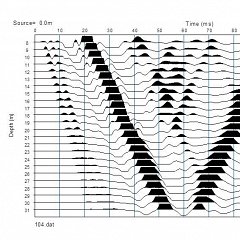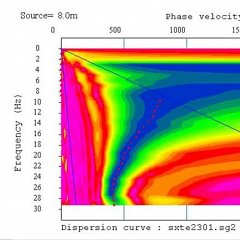Geode Seismograph
from Geometrics
The Geode is the most versatile seismograph currently on the market for near surface geophysics and exploration. The proven design has stood the test of time to become one of the most widely distributed seismographs in the world; simply because it is ideal for refraction, reflection, MASW, MAM, downhole, VSP or tomography- and even marine surveys. And when you are not using the Geode for exploring, use it for monitoring earthquakes, quarry blasts or vibration from heavy equipment.
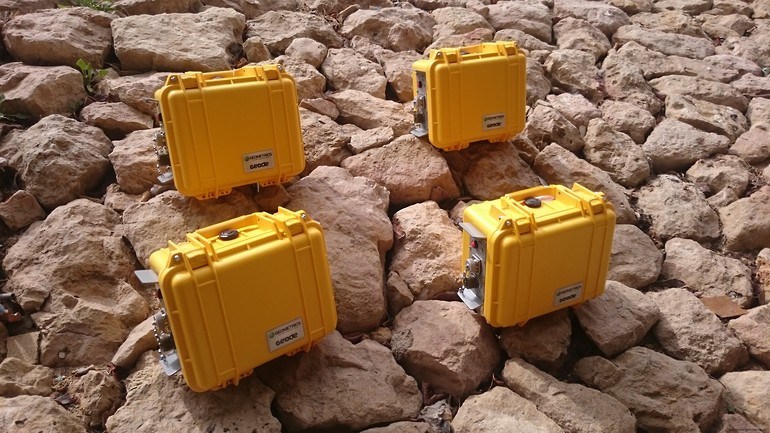
A large contributing factor to the success of the Geode is the systems modularity. It is possible to initially buy a simple 24 channel refraction system and keep adding additional hardware and software options as and when they are required, making the system very cost effective.
For light-duty applications, you can run the Geode from your laptop to view, record, and process your data. The software interfaces to the Geode as a simple high-speed network device, eliminating the need for special drivers and cards. For more demanding applications where ruggedness and reliability are key, use the Geode in combination with Geometrics StrataVisor NZXP series seismographs. Geode architecture and Geometrics software lets you build seismic recording systems from 3 to 1000 channels with multiple lines and built-in roll capability.
The low power Geode even have an on-board hardware correlator that can be used for swept sources and MiniSosie (pseudo-random) surveys, compressing data before transmission. The Geode seismic modules house from 3 to 24 channels each and interconnect using inexpensive digital network cable. The Geode will run all day on a small 12v battery and sleeps when not in use. And because getting the answer is key, Geometrics bundles the Geode with a suite of no-charge industry-standard professional software that expands you capabilities for commercial or research applications.
Product Dimensions
| Physical | Dimensions (L x W x H) | Weight |
|---|---|---|
| Geode Seismograph (instrument only) | 26cm x 31cm x 18cm | 3.6kg |
Technical Specifications
| Channels: | 3, 6, 8, 12, 16 or 24. Network multiple Geode Seismographs together to achieve up to 1000 channels. |
|---|---|
| A/D Conversion: | 24 bit result using Crystal Semiconductor sigma-delta converters and Geometrics proprietary over sampling. |
| Dynamic Range: | 144 dB (system), 110 dB (instantaneous, measured) at 2 ms, 24 dB. |
| Distortion: | 0.0005% @ 2 ms, 1.75 to 208 Hz. |
| Bandwidth: | 1.75 Hz to 20 kHz. 0.6 and DC low frequency option available. |
| Common Mode Rejection: | > 100dB at <= 100 Hz, 36 dB. |
| Crosstalk: | -125 dB at 23.5 Hz, 24 dB, 2 ms. |
| Noise Floor: | 0.20 uV, RFI at 2 ms, 36 dB, 1.75 to 208 Hz. |
| Stacking Trigger Accuracy: | 1/32 of sample interval. |
| Maximum Input Signal: | 2.8V PP, 0 dB. |
| Input Impedance: | 20 kOhm, 0.02 uf. |
| Preamplifier Gains: | Standard factory configuration is 24 and 36 db, selectable in software. Optionally, can be jumpered for software selectable 12 and 24 dB or can be jumpered in four channel blocks as a single fixed gain of 0 dB for high-voltage devices. |
| Anti-alias Filters: | -3 dB at 83% of Nyquist frequency, down 90 dB. |
| Sample Interval: | 0.02, 0.03125, 0.0625, 0.125, 0.25, 0.5, 1.0, 2.0, 4.0, 8.0, 16.0 ms. |
| Record Length: | 16,384 samples standard, 65,536 samples optional. |
| Data Transmission: | Uses Ethernet transmission standard over CAT 5 copper or multimode fiber-optic cable. Distance between boxes: CAT 5 cable up to 0.25 km; fiber-optic cable up to 1.5 km. |
| Intelligent Self-Trigger: | Earthquake, blasting and vibration monitoring. Optional. |
| Data Formats: | SEG-2 standard. SEG-D and SEG-Y available. |
| Triggering: | Positive, negative or contact closure, software adjustable threshold. Will self-trigger on continuous data using threshold detecting STA/LTA-like algorithm. |
| Power: | Requires 12V external battery. Uses 0.65 W/channel during acquisition, sleep mode reduces power consumption by 70% while in standby. |
| Environmental: | -30 to 70 degrees C. Waterproof and submersible. Withstands a 1 m drop onto concrete on 6 sides and 8 corners. Passes MIL810E/F vibration. |
| Data logger: | Laptop running Windows OS or Geometrics’ ruggedized StrataVisor NZ. Basic operating software controls one Geode and can be optionally expanded to control multiple Geodes, do marine surveying, continuous recording, repeaters, sub-bottom profiling, VSP, GPS synchronization, blast and vibration monitoring and surveillance. |
Shipping
| Contents | Dimensions (L x W x H) | Weight |
|---|---|---|
|
Case1
Typical 24 channel refraction system. |
71cm x 50cm x 40cm | 45kg |

